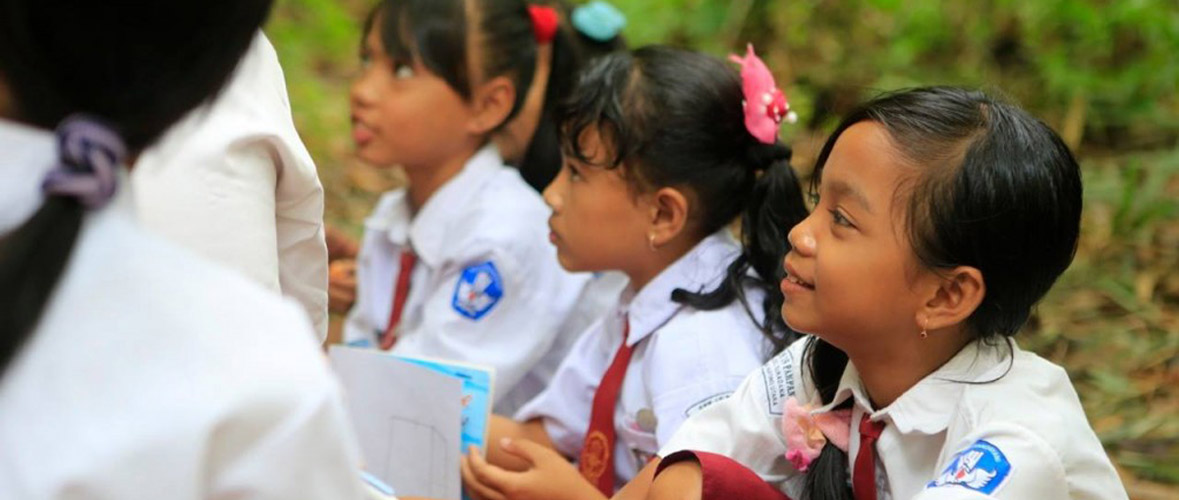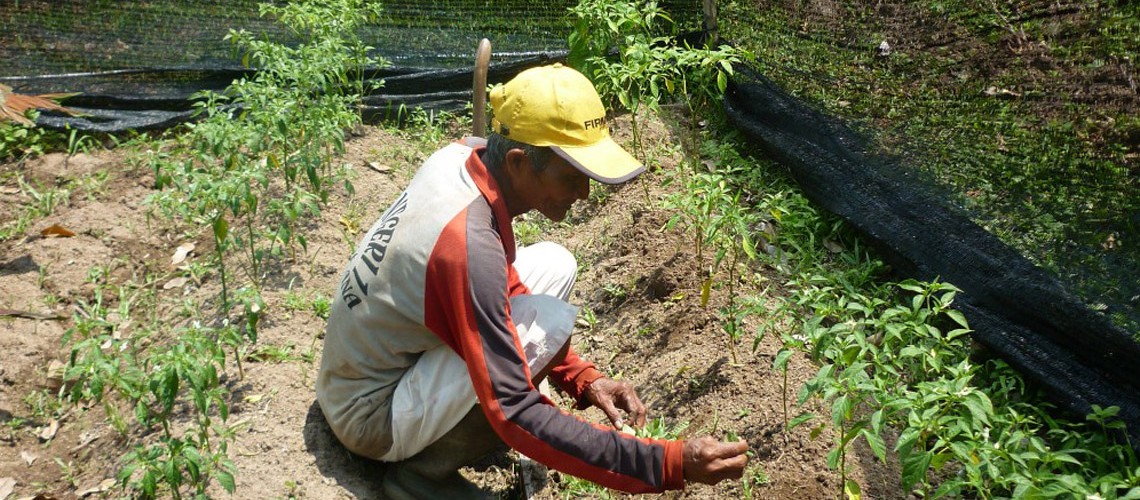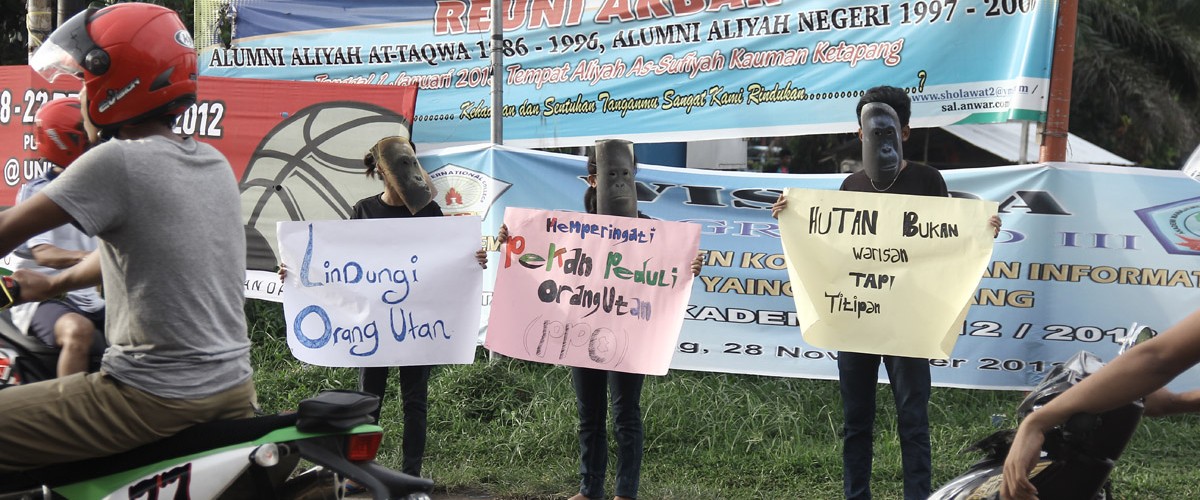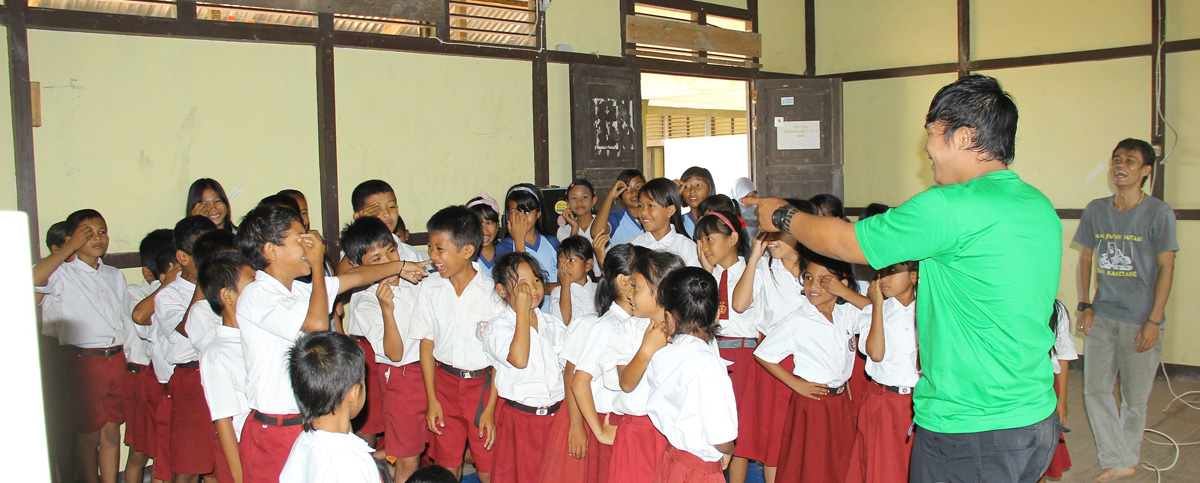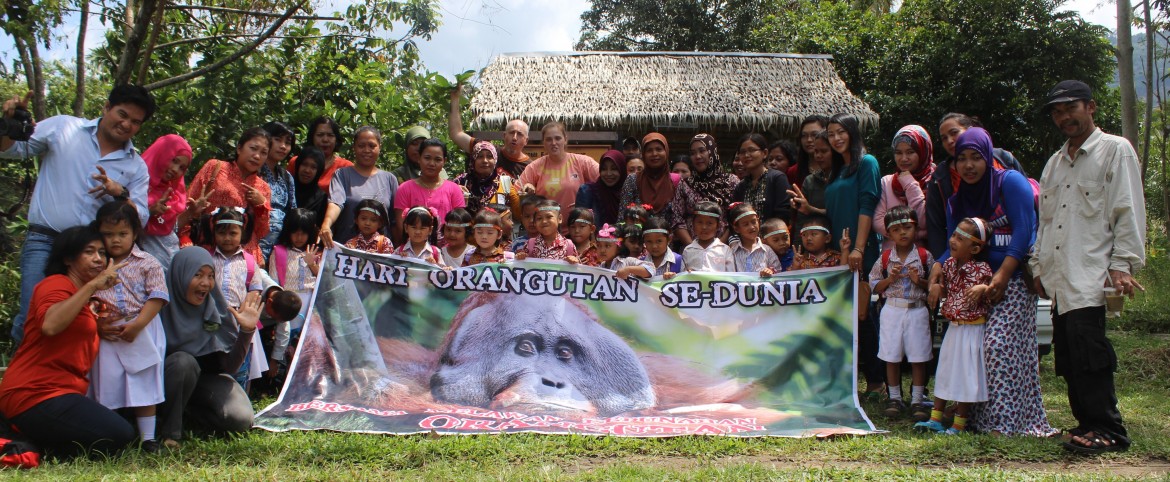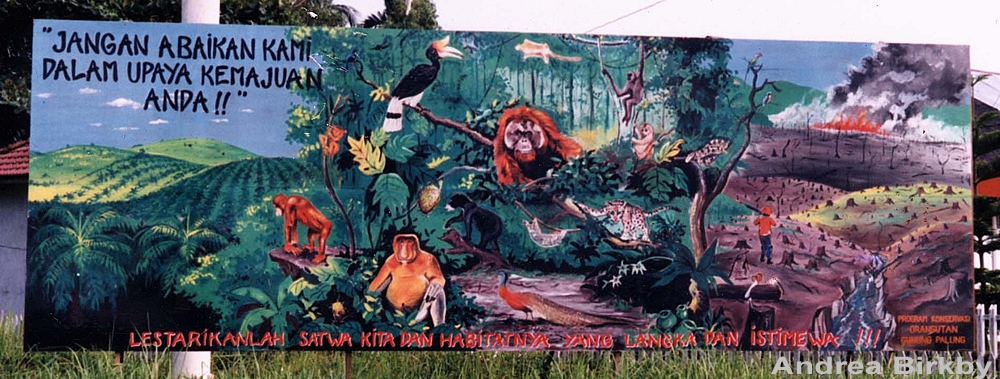By Edward Tang, Conservation Education Coordinator
Do you know why we should protect local rivers and forests? Of course the obvious reasons include species and habitat conservation, but healthy ecosystems also help prevent many natural disasters from occurring. Some of the benefits include better drainage to prevent flooding and erosion, and helping to maintain soil fertility. Healthy forests also contribute to clean, healthy water. There are two main rivers in Gunung Palung, the Matan River and the smaller Palung River and these rivers provide much of the clean drinking water for West Kalimantan. They also provide us access to the Cabang Panti research station as we often use boats on the Matan and Palung Rivers to transport supplies and people to the research camp.
 |
| The Matan River, West Kalimantan. |
We are currently in the process of creating a new Customary Forest that borders Gunung Palung National Park. This Customary Forest will be a legally protected area of land that is owned by local indigenous communities. These aquatic and terrestrial ecosystems provide many basic life functions for these communities. Probably the most notable is the regulation of the drinking water supply. This healthy forest helps prevent salt water intrusion and filters contaminants out, so the drinking water remains clean. The healthy forest also prevents flooding. The soil is able to absorb excess water, whereas if the soil has been manipulated, less absorption will occur. Less absorption leads to increased erosion, landslides and loss of soil fertility. These are important factors to keep in mind as Indonesia has two seasons: wet and dry. During the wet or rainy season, West Kalimantan usually receives over 400 mm, or 10 inches of rain per month. If this rain is not absorbed into the soil, it runs off the land taking soil, nutrients and debris with it. This runoff, then ends up in the river and can cause catastrophic effects on the aquatic ecosystem. It is important to recognize that changes in terrestrial systems cause changes in aquatic systems.
 |
| Edward Tang in the heart of the rainforest collecting data for the biodiversity surveys. |
This region of forest also has many other potential uses and benefits. In order to determine those potential uses and the biodiversity found there, GPOCP conducted surveys and analyses of the flora and fauna to gain a better understanding of the potential benefits that can be managed in a sustainable manner. Our initial results conducted in the Paduan Village region found 0.5 orangutan nests per square kilometer for a total of 34 nests from the 6,788 hectares surveyed. We also found more than 100 species of plants, consisting of 42 families. Of those 42 families, we found that 72% are food trees for orangutans. Distribution of the orangutan food trees such as Lithocarpus conocarpus, Lancifolia litsea, Diospyros maingayi, and Santiria oblongifolia ranked high on the Shannon-Wiener biodiversity index, with a value of 3.7. The Shannon Wiener index is commonly used to characterize species diversity within a community. The values range from 0 to 5 and represent increasing biodiversity. A value of 3.7 indicates a rather bio-diverse community and proves that the area is ideal for wildlife, especially orangutans.
 |
| An orangutan nest spotted by our team during their biodiversity survey. |
This forest area also has the potential to become a destination for ecotourism and education. A boat ride along the river offers wonderful views of nature and wildlife. As our survey discovered, it is an ideal habitat for orangutans and other primate species, such as proboscis monkeys and gibbons. With the implementation of a legal Customary Forest, this area will be protected and maintained as a healthy ecosystem for generations to come, for both human and wildlife.
 |
| A healthy forest surrounding Gunung Palung National Park. Photo copyright Tim Laman. |
